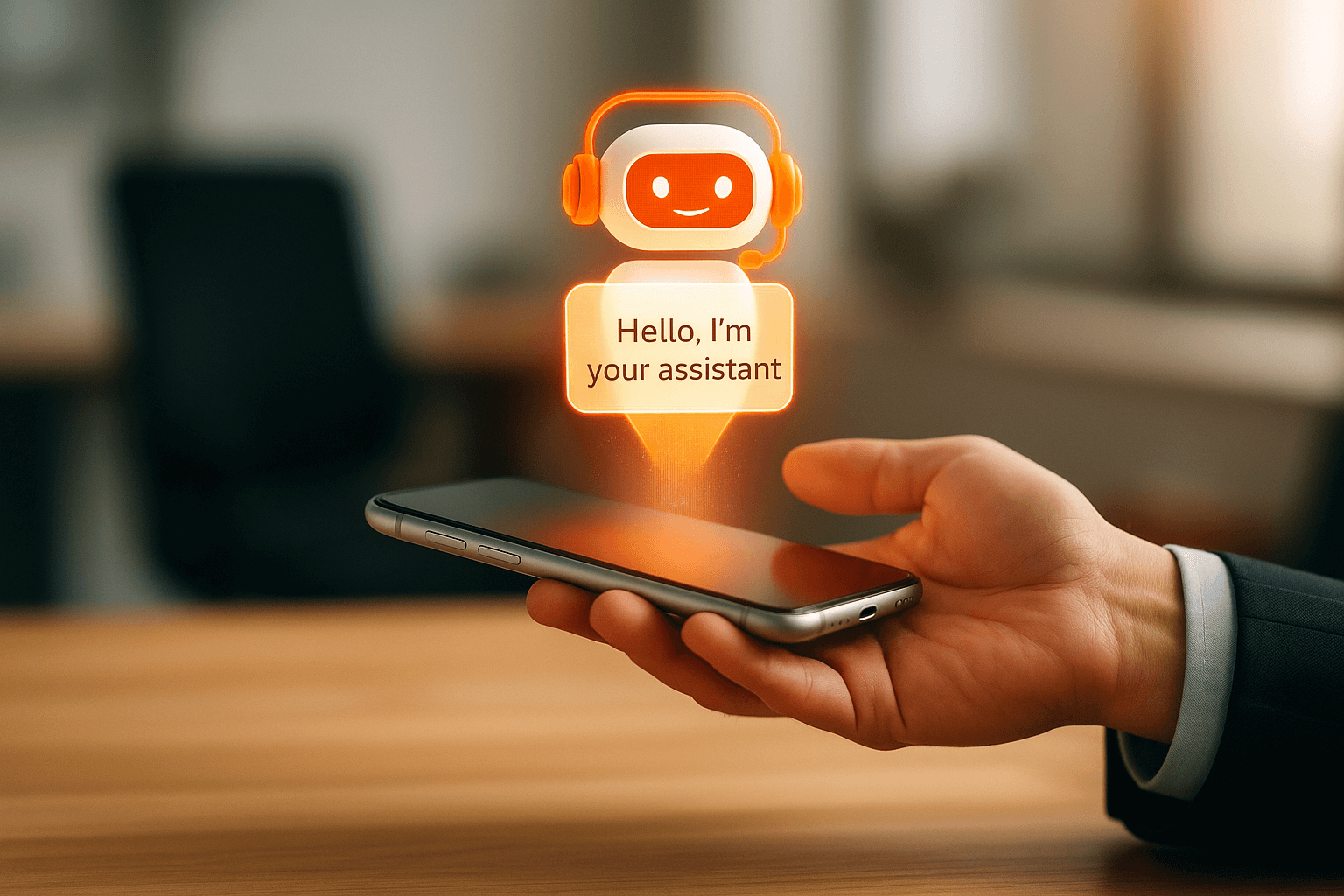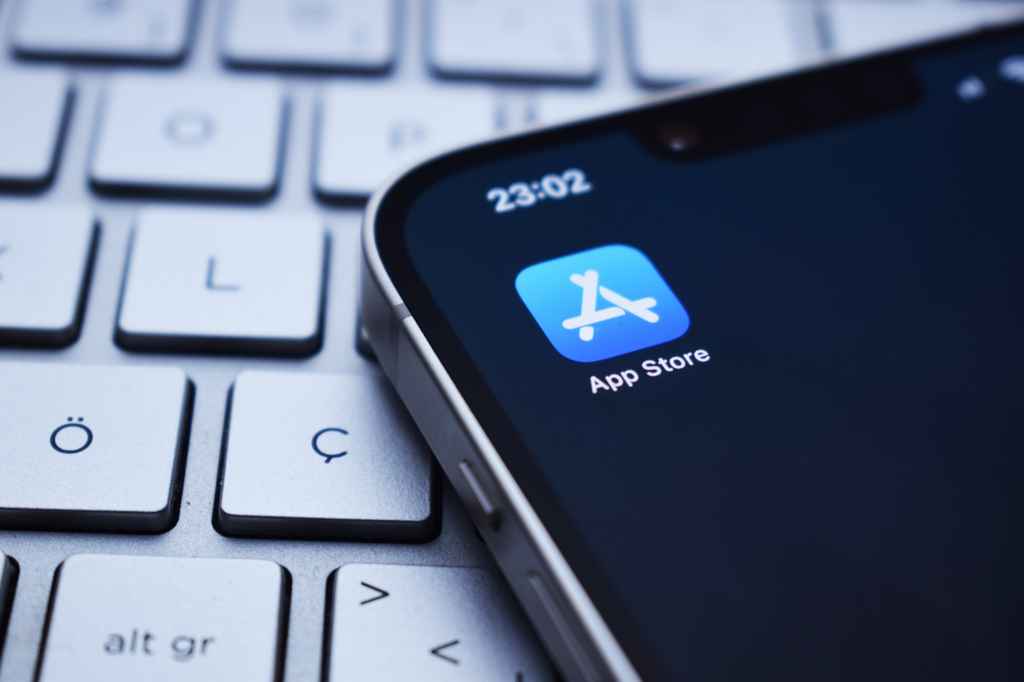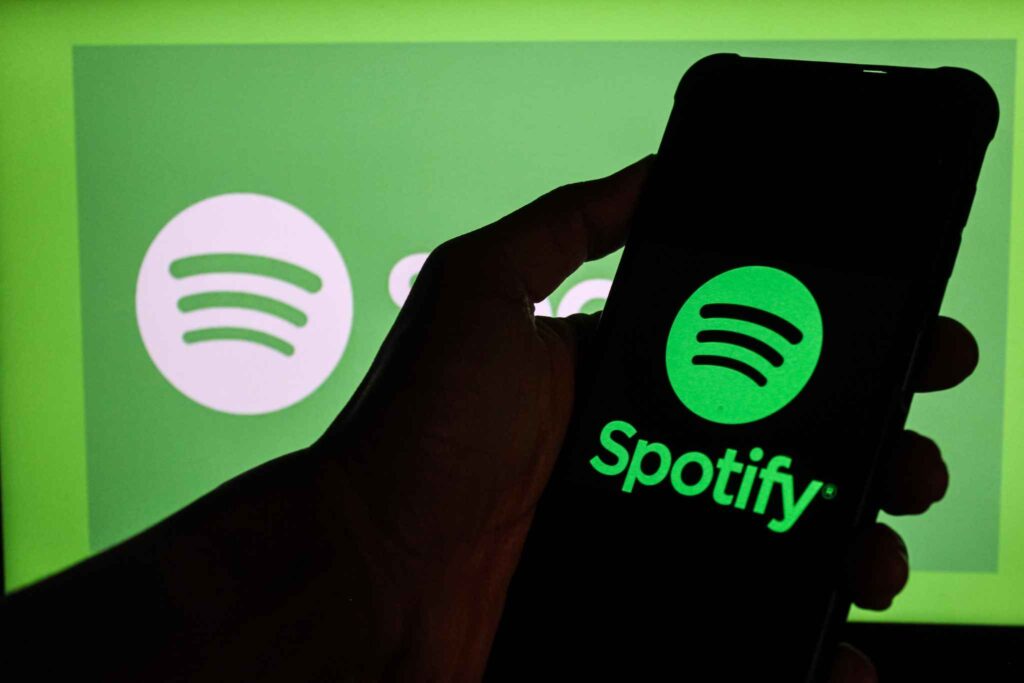Learn how to create an AI chatbot that drives real business value in 2025, scalable, secure, and tailored for product-led growth.
Table of Contents
Why Every Startup Is Rushing to Build AI Chatbots in 2025
Market Pressure and Opportunity
The AI chatbot revolution is part of a much larger wave: a research shared that the global artificial intelligence market is projected to grow from $279.22 billion in 2024 to $1.81 trillion by 2030, at a CAGR of 35.9%. This rapid expansion is driven by the widespread adoption of AI across industries like healthcare, finance, retail, and manufacturing. For startup founders, product managers, and CTOs, this isn’t just a tren, it’s a strategic imperative for staying competitive in an AI-powered digital economy.
Customer expectations have shifted. They now demand instant responses, 24/7 availability, and conversational interfaces that feel personalized and frictionless. According to Gartner, by 2027, chatbots will become the primary customer service channel for about 25% of organizations. That means today’s decision-makers must either adapt or risk irrelevance.
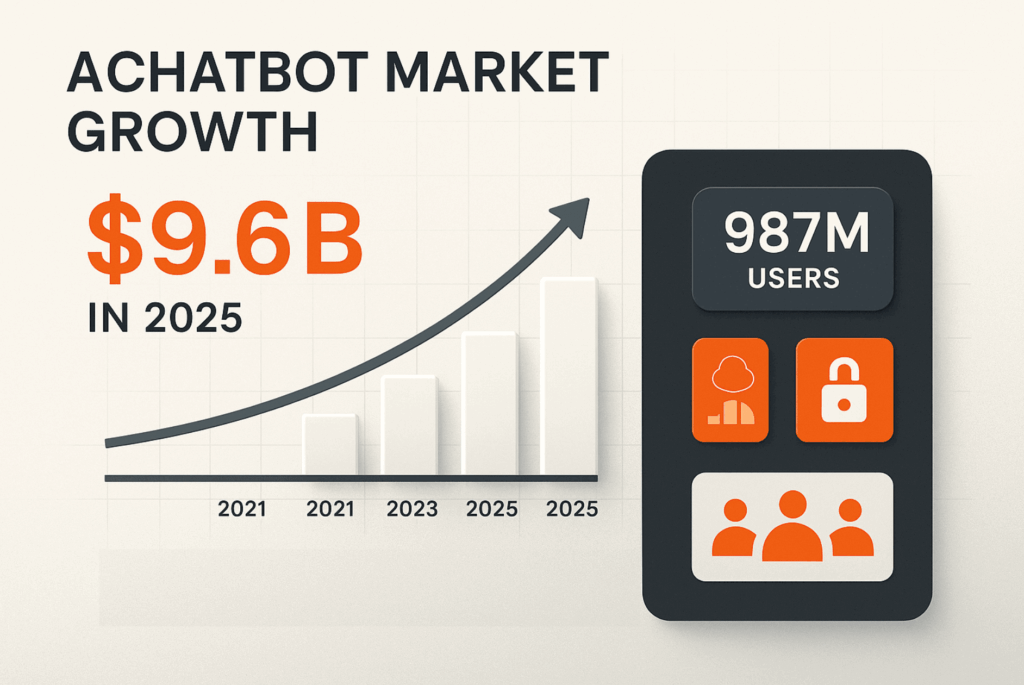
At the same time, AI development platforms have become more accessible than ever. From no-code tools like Botpress and Zapier Chatbots to powerful open-source frameworks, launching an AI-powered app doesn’t require a PhD in machine learning or a multimillion-dollar budget.
But while the barrier to entry has lowered, the complexity of building a scalable, secure, and user-friendly chatbot, especially one that aligns with business goals, remains high. This guide is designed specifically for startup founders, product managers, CTOs, and innovation leads who are considering the move from prototype to product. It will walk you through each critical step of development, offering practical insights on platform selection, data integration, deployment, and scaling.
But Most AI Chatbot Projects Fail Before Launch, Here’s Why
Despite the AI gold rush, most chatbot projects fail. The reasons? Poor scoping, weak integration with business systems, lack of user-centered design, and overreliance on “plug-and-play” AI tools that promise too much and deliver too little.
By the end of this guide, you won’t just know how to build an AI chatbot, you’ll know how to build one that drives real business outcomes.
The Foundation: Understanding What You’re Really Building
To build a successful AI chatbot in 2025, you need more than code, you need clarity. This section lays the groundwork by helping startup founders and innovation leaders understand what an AI chatbot truly is, why it matters, where it fits into their business strategy, and the modern tech stack that powers it.
What Is an AI Chatbot and Why It Matters
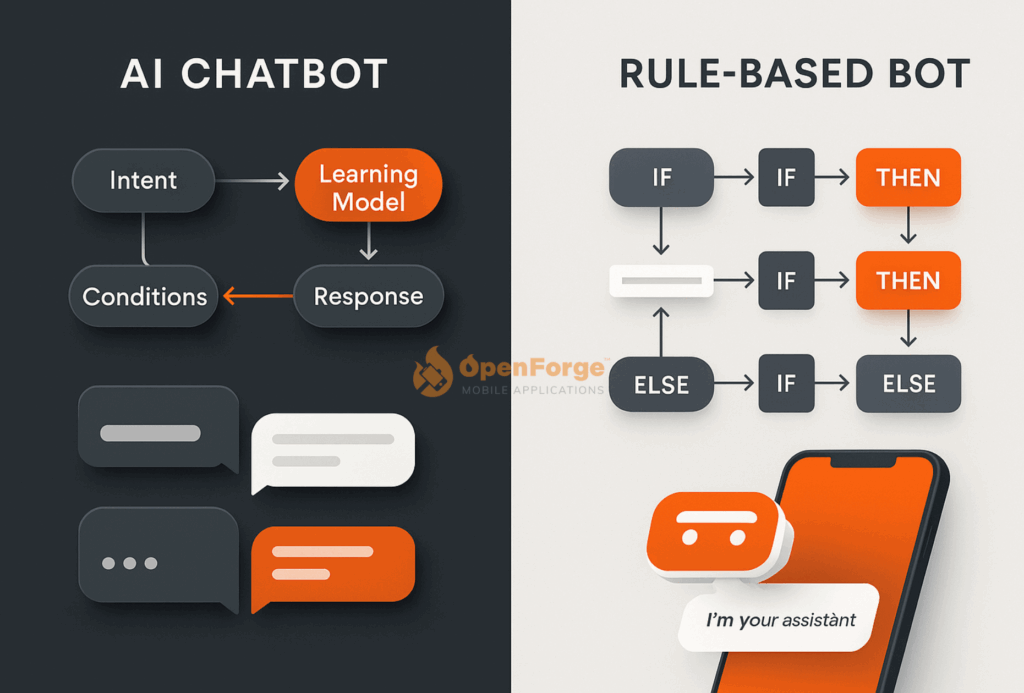
Not all chatbots are created equal. A rule-based chatbot follows rigid decision trees using “if/then” logic. These bots are great for narrow tasks like FAQs or order tracking but fall short in dynamic, open-ended scenarios. In contrast, AI chatbots leverage Natural Language Processing (NLP), Machine Learning (ML), and even deep learning to understand user intent, carry context, and deliver personalized experiences.
AI-powered bots can learn from previous conversations, adapt to new queries over time, and operate across platforms. AI chatbots support multilingual interactions, analyze behavior, and can manage unpredictable conversations, giving them an edge in scalability and long-term ROI.
Core Use Cases: Support, Sales, Transactions, and More
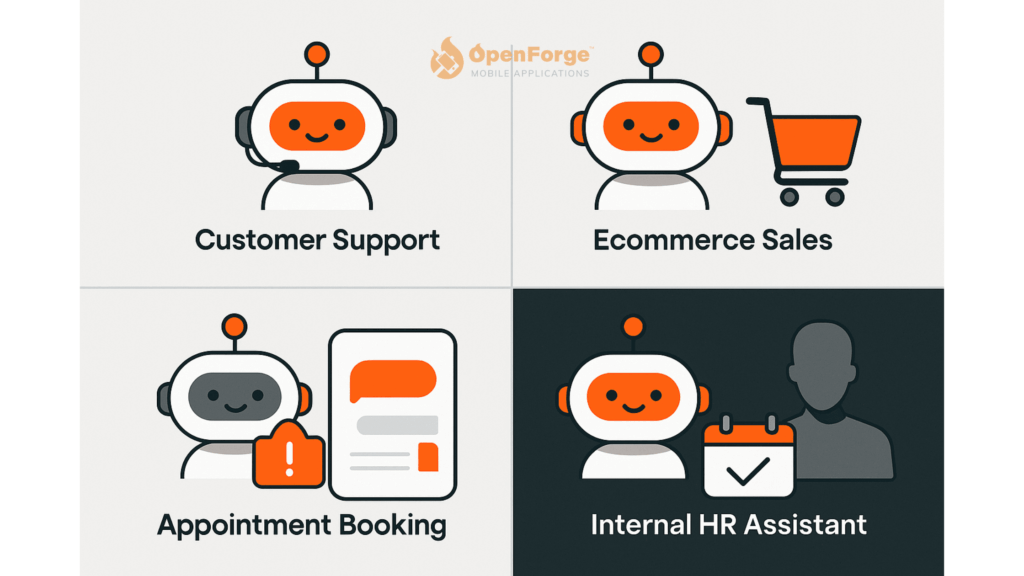
AI chatbots aren’t limited to customer support, they now power sales funnels, automate transactions, and even guide users through onboarding processes. In fact, chatbots are projected to manage 25% of customer service interactions by 2027, according to Gartner.
Some key use cases include:
- Sales: bots that qualify leads, compare plans, and nudge users to convert.
- Support: bots that resolve issues, surface FAQs, and escalate when needed.
- Transactions: bots that process payments, book appointments, or send confirmations.
- Education & onboarding: bots that teach users, recommend features, or reduce churn.
- Lead generation: bots integrated with CRMs that collect contact info via WhatsApp or Facebook Messenger.
This flexibility makes them vital tools for scaling personalized experiences without the overhead of human agents.
AI Chatbot Tech Stack Overview
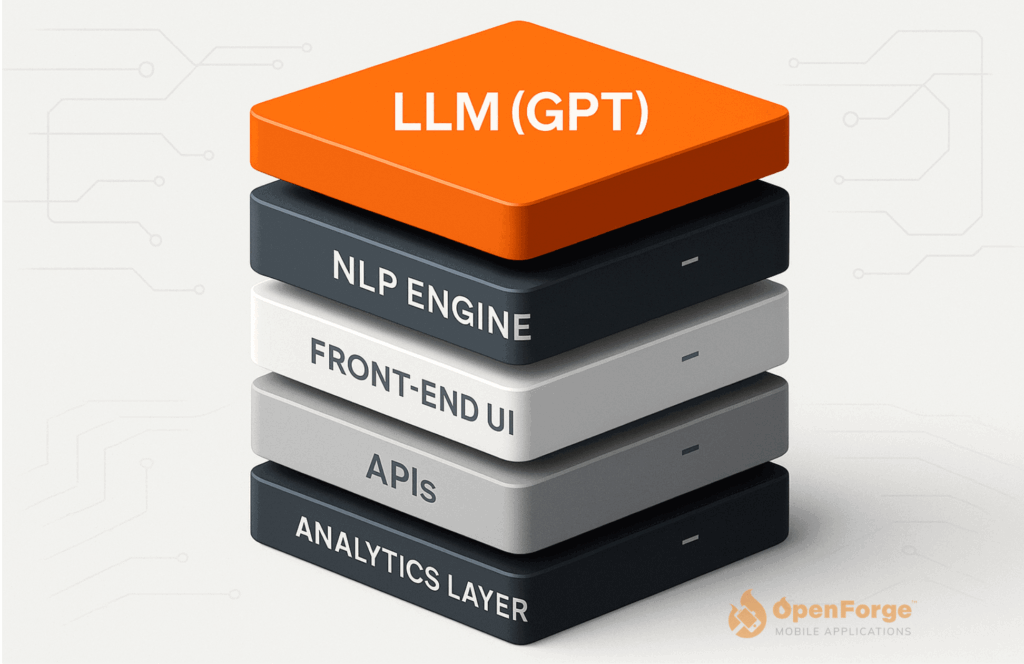
The modern AI chatbot tech stack is both powerful and modular. At the foundation are platforms like Dialogflow, IBM Watson, Rasa, Microsoft Bot Framework, and Amazon Lex, each offering tools for NLP, integration, and user interaction design.
Key components of the tech stack include:
- NLP Engines: to understand intent (e.g., Google’s Dialogflow).
- Machine Learning Models: to improve performance through user data.
- Chatbot Frameworks: for building conversation flows (e.g., Botpress, Microsoft Bot Framework).
- Integrations: with CRMs, helpdesk software, e-commerce platforms, and more.
- Security & Compliance: GDPR, HIPAA compliance to ensure user data is protected.
Wondering what custom app development looks like with AI?
7 Key Steps to Successfully Build Your AI Chatbot App
Developing an AI chatbot app in 2025 requires more than code, it demands product clarity, strategic UX thinking, and scalable architecture. This section outlines a proven, step-by-step process that leading AI development companies follow to launch successful, future-ready bots.
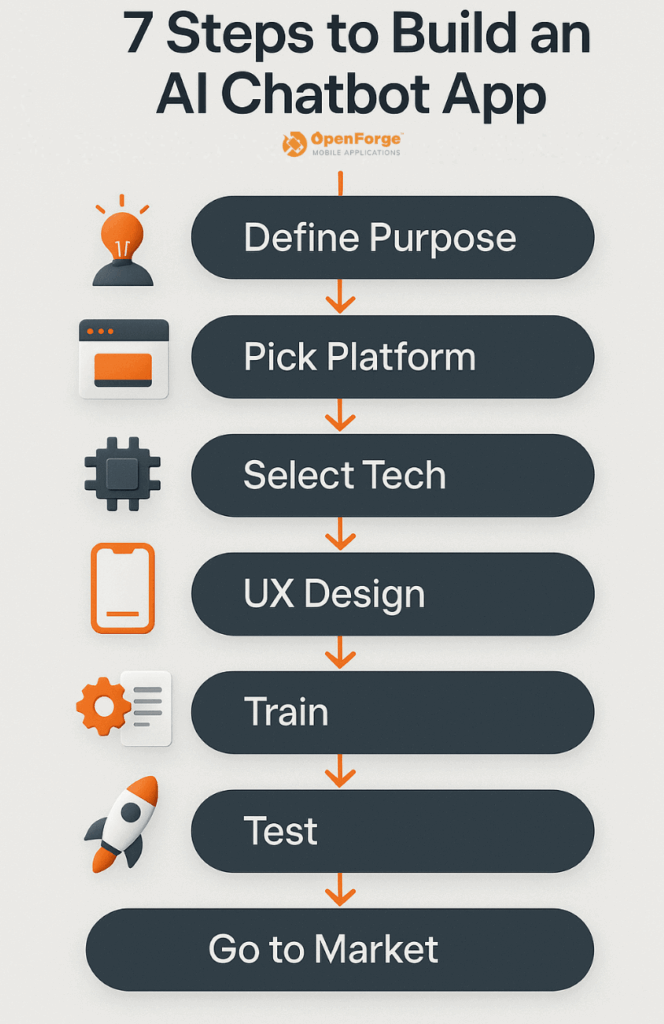
Step 1 – Define Your Bot’s Purpose and KPIs
Before writing a single line of code, define what business goal your chatbot will fulfill. Is it customer support automation, lead qualification, user onboarding, or e-commerce transactions?
Step 2 – Choose the Right Platform
Your platform selection depends on your use case, audience, and integration needs. No-code tools like Chatfuel or ManyChat are great for marketing bots and quick MVPs. But if you’re building a robust AI chatbot app, enterprise-ready frameworks like Dialogflow, IBM Watson, or Rasa are better suited.
Advanced frameworks offer better NLP capabilities, multilingual support, and integration flexibility, making them ideal for scaling your AI chatbot across multiple channels.
Step 3 – Select the Tech Stack
Your AI chatbot tech stack will likely include:
- NLP Engine: Google Dialogflow, Microsoft LUIS, or OpenAI API
- Backend: Node.js or Python (Flask, FastAPI)
- Frontend/UI: React Native or Flutter (for mobile integration)
- Database: PostgreSQL or Firebase
- Hosting: AWS, Google Cloud, or Azure
Use tools that support LLMs (Large Language Models) to handle generative responses and continuous learning. This tech stack gives you flexibility and real-time inference capability.
Step 4 – Design Conversations and UX/UI Flows
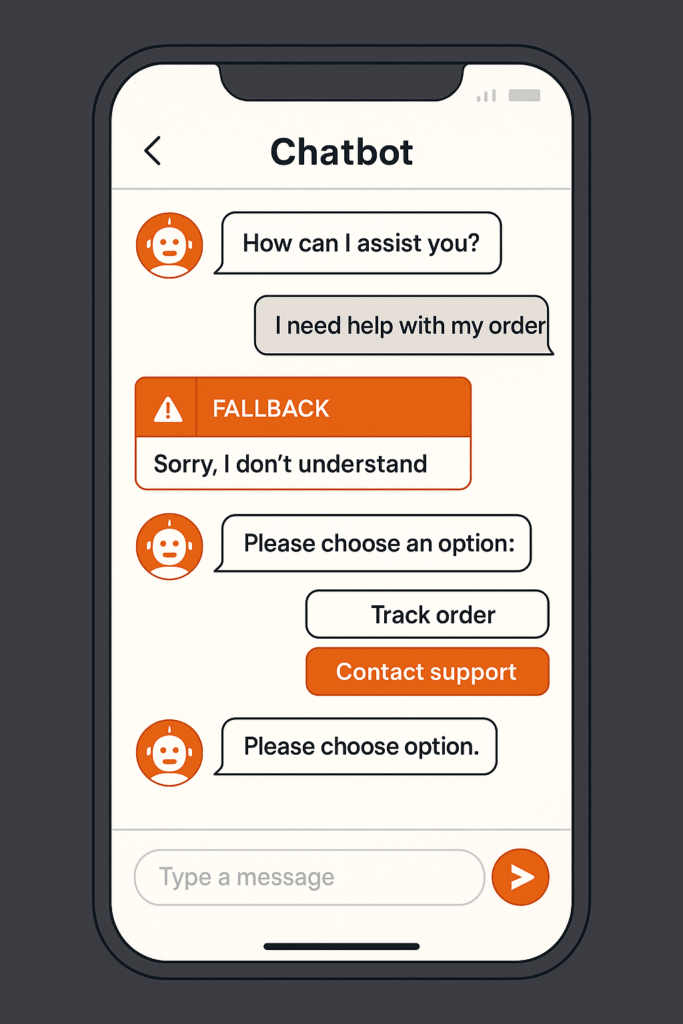
Designing chatbot conversations is part product strategy, part psychology. Mapping conversation flows, including fallback paths and escalation logic, improves engagement and trust.
User experience is a critical success factor for chatbot adoption.
Step 5 – Train the Model
This is where your AI chatbot becomes “intelligent.” Feed the model with relevant data, FAQs, support tickets, product documentation, and fine-tune intent classification and entity extraction.
A good LLM implementation allows your chatbot to handle nuance, slang, and multiple languages. Cleveroad recommends combining supervised learning (using sample dialogues) and reinforcement learning from real interactions.
Step 6 – Test, Improve, Optimize
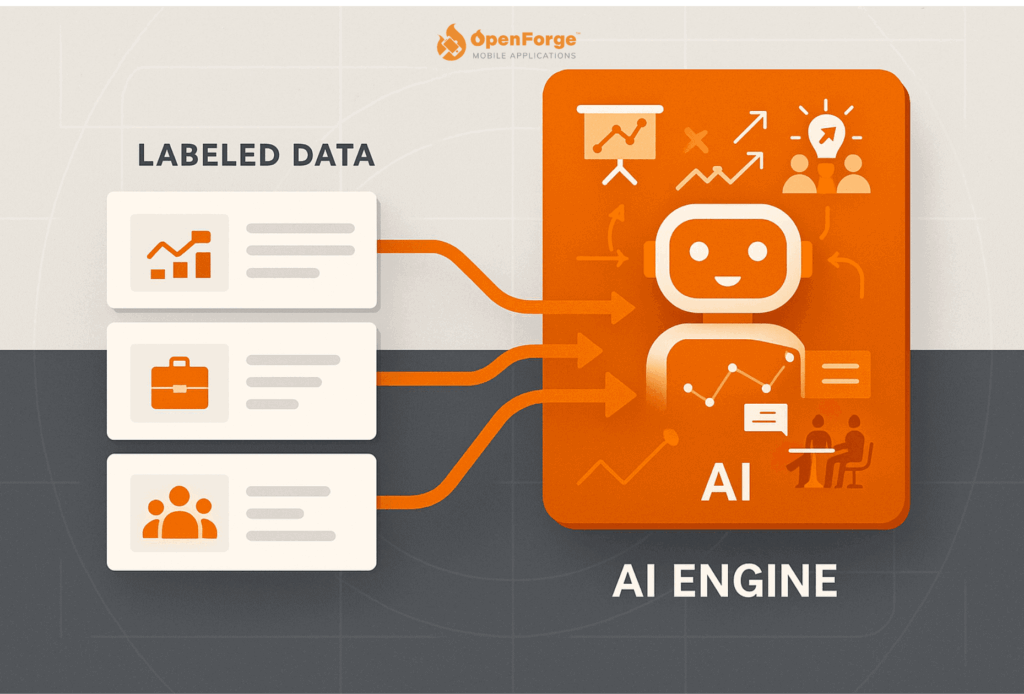
No AI chatbot app is perfect on launch day. Conduct functional testing (does it work?), usability testing (is it intuitive?), and NLP testing (does it understand intent?). Use metrics like fallback rate, user drop-off, or time-to-resolution to refine your model iteratively.
Cleveroad recommends continual improvement cycles post-launch to keep pace with changing user expectations and domain-specific vocabulary.
Step 7 – Prepare for Go-to-Market and Post-Launch Learning
Deployment is just the beginning. Prepare onboarding content, user support paths, and real-time analytics dashboards. Establish feedback loops for monitoring and improving the chatbot’s performance.
Include options for human handoff, so users don’t feel trapped in the bot loop. Monitor key metrics like session duration, satisfaction scores, and feature adoption to inform future iterations.
Let’s explore how to bring your app to life, scalable, and future-ready.
Build vs Buy: Choosing the Right App Development Partner
Launching a high-performing AI chatbot in 2025 isn’t just about technology, it’s about execution. The wrong approach can cost startups and enterprise teams hundreds of thousands of dollars in wasted time, poorly integrated systems, or apps that don’t scale. This section breaks down your options and makes the case for choosing a custom development partner like OpenForge.
Why No-Code Doesn’t Cut It for AI-Powered Apps in 2025
No-code chatbot builders have evolved dramatically, but they still come with critical limitations. Platforms like Chatfuel or ManyChat are great for basic FAQs or marketing bots. However, when you’re developing an AI chatbot app that needs to integrate with CRMs, perform transactional tasks, or process data through LLMs, no-code simply won’t meet enterprise standards.
Rule-based chatbots built with no-code tools are ideal for small companies with limited functionality needs, but they lack the multilingual support, data processing, and decision-making capabilities that more advanced bots require. Additionally, their inability to adapt dynamically means user experience often degrades as interactions become complex.
In 2025, businesses demand scalable, secure, and compliance-ready chatbot systems, especially when handling sensitive data or driving core customer operations. This is why most successful mid-sized businesses and startups outgrow no-code stacks as soon as real scale or innovation is required.
In-House vs Agency vs Freelancers: Cost, Risk, ROI Comparison
When it comes to building a custom AI chatbot app, founders usually weigh three routes: in-house teams, freelancers, or agencies. Each has clear trade-offs:
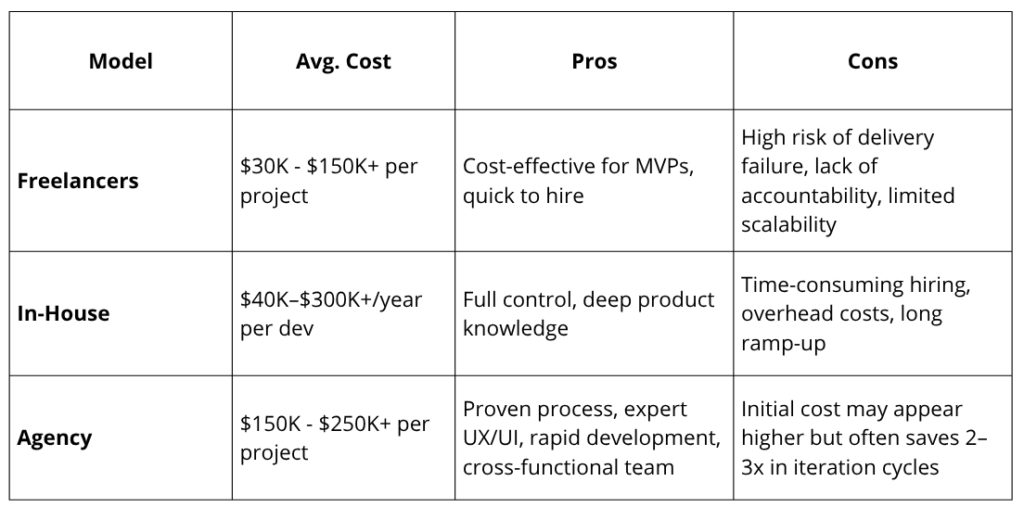
Data source: Upwork Report, How much does it cost to develop an app
While freelancers are tempting for early-stage startups, they often lack architectural foresight and QA processes, leading to technical debt. Meanwhile, in-house teams are powerful for long-term innovation but involve high fixed costs and slower initial velocity.
OpenForge strikes a balance between technical rigor and cost-efficiency, offering product strategy combined with scalable global development resources. Our cross-disciplinary teams specialize in custom app development, including AI chatbot solutions tailored to your market, infrastructure, and regulatory environment.
What to Look For in an AI App Development Company
Not all agencies are created equal. Here’s what experienced product leaders should prioritize when vetting an AI app development company:
- End-to-End Capability: Strategy, design, development, QA, and support.
- Tech Stack Fluency: Experience with frameworks like Dialogflow, Rasa, GPT-based APIs, and enterprise infrastructure.
- UX/UI Expertise: AI alone doesn’t ensure success, UX drives satisfaction.
- Security & Compliance: Especially for finance, healthcare, and regulated industries.
- Post-Launch Support: Continuous improvement via analytics, model updates, and user feedback loops.
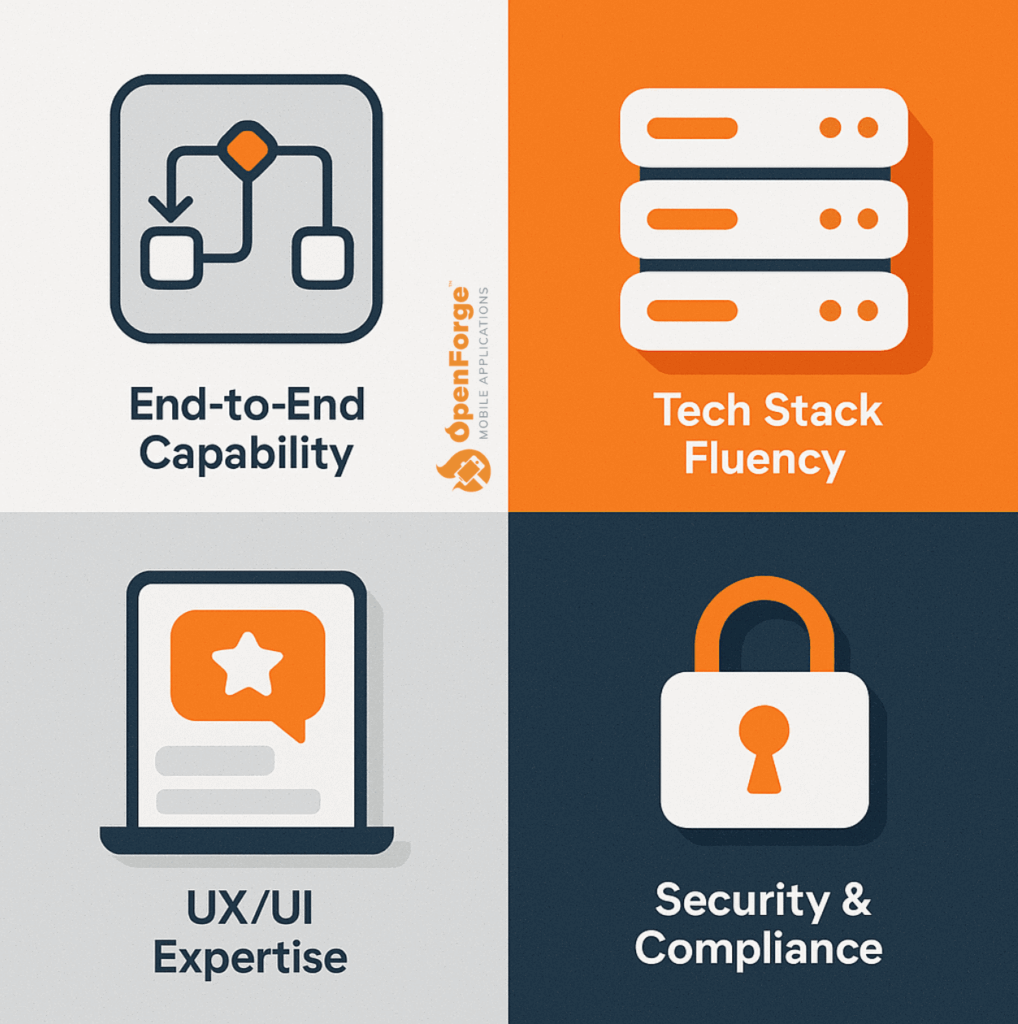
We go beyond just writing code. We collaborate closely with founders and product managers to align every decision with ROI and business impact. Whether you’re launching an internal productivity tool or a customer-facing chatbot for your SaaS platform, our team ensures the experience is frictionless, future-proof, and scalable.
Not sure where to start? A strategy session can clarify your roadmap.
Ready to Build a Real AI Chatbot App in 2025?
In a digital landscape expected to reach 987 million chatbot users and $9.6 billion in market value by 2025, the need for custom-built, intelligent AI chatbot applications has never been greater.
Here’s the reality: plug-and-play chatbot builders might offer speed, but they often sacrifice scalability, data security, and true personalization, three pillars of long-term AI success. Businesses in sectors like healthcare, finance, and logistics are increasingly leaning on advanced chatbot features like proactive messaging, deep NLP comprehension, and RAG (retrieval-augmented generation) integrations to enhance both user satisfaction and ROI.
This is where OpenForge becomes your strategic advantage. As a U.S.-based app development partner, OpenForge doesn’t just build apps, we deliver custom experiences that drive conversions, reduce costs, and improve retention.
We’ve helped innovative teams turn bold ideas into custom AI applications, and Summon Worlds is a perfect example. Built for fantasy writers and worldbuilders, Summon Worlds blends AI writing assistants, structured world-building tools, and interactive UX to help creators build entire universes with ease.
The result? A platform that’s now empowering thousands of storytellers to turn imagination into reality, powered by AI, great UX, and strategic development.
Frequently Asked Questions
An AI chatbot in 2025 uses Natural Language Processing (NLP) and large language models (LLMs) like GPT to understand and generate human-like responses. Unlike rule-based bots, AI chatbots can learn from user input, retrieve real-time data (via RAG), and make decisions autonomously to complete tasks such as bookings, support, or sales.
To build an AI chatbot app, follow these steps: Define its goal and KPIs. Choose a platform (mobile, web, cross-platform). Select an AI tech stack (OpenAI, LangChain, Flutter, etc.). Design UX/UI flows. Train it on real data. Test & optimize. Launch and scale with user feedback. Partnering with a custom AI app development company like OpenForge ensures long-term performance and scalability.
Custom AI chatbots are more scalable, secure, and adaptable. While no-code builders are fast to deploy, they often lack enterprise-grade integrations, user ownership, and advanced LLM capabilities. Custom-built bots also reduce long-term costs and avoid vendor lock-in.
Most AI chatbot apps fail due to unclear use cases, lack of post-launch planning, poor UX design, and reliance on generic no-code tools. Successful apps involve proper training data, a clear product roadmap, and continuous optimization, which OpenForge integrates from day one.
The cost to build a fully functional AI chatbot app ranges from $50,000 to $250,000+, depending on features, integrations, and complexity. MVPs cost less, while enterprise-grade apps with multilingual AI and real-time APIs cost more. A detailed discovery phase helps scope the project accurately and control the budget.
References
- Grand View Research®, Artificial Intelligence Market Size, Share & Trends Analysis Report By Solution (Hardware, Software, Services), By Technology, By End Use, By Region, And Segment Forecasts, 2025 – 2030. https://www.grandviewresearch.com/industry-analysis/artificial-intelligence-ai-market
Botpress. How to Build Your Own AI Chatbot. https://botpress.com/blog/how-to-build-your-own-ai-chatbot
Zapier. The Best AI Chatbots in 2025. https://zapier.com/blog/best-ai-chatbot
Voiceflow. How to Create a Chatbot: 8 Key Steps. https://www.voiceflow.com/blog/how-to-create-a-chatbot
- Upwork – “How Much Does It Cost to Build a Mobile App?”, Upwork Resources, 2024. https://www.upwork.com/resources/cost-build-mobile-app#6-outsourcing-mobile-app-development-agencies-vs-freelance-developers

